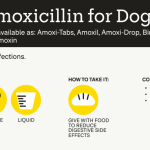If you’re a cat lover, you know that there’s nothing more frustrating than watching your feline friend scratch and itch nonstop. But have you ever stopped to think about what could be causing those itchy feelings? You might assume that the culprit is simply dry skin or an allergy, but the truth is, there are many other factors at play – including bacterial infections.
Can a Bacterial Infection Make a Cat Itch?
In this post, we’ll explore whether bacteria can indeed cause your cat to itch and what you can do about it. Whether you’re a seasoned cat owner or just considering bringing a new furry friend into your life, understanding the role of bacterial infections in feline itching is crucial for providing your cat with the best possible care.
What Causes Feline Itching?
Before we dive into whether bacteria can cause itching, it’s essential to understand what contributes to feline itching in the first place. Common culprits include:
- Flea allergies or bites
- Environmental allergens like pollen or dust mites
- Skin conditions like eczema or acne
- Hormonal imbalances
In the next section, we’ll explore how bacterial infections can fit into this mix and what you can do to identify and address them.
If your cat is constantly scratching and itching, it’s normal to wonder what could be causing those itchy feelings. While dry skin and allergies are common culprits, bacterial infections can also play a significant role. In this section, we’ll explore how bacteria can contribute to feline itching and what you can do to identify and address the issue.
How Bacterial Infections Can Cause Feline Itching
Bacteria can cause feline itching in several ways:
- Bacterial skin conditions, such as impetigo or pyoderma, can cause intense itching and discomfort.
- Secondary infections: Bacteria like Staphylococcus pseudintermedius (MRSP) can cause secondary infections in cats with pre-existing skin conditions, leading to increased itching and inflammation.
- Bacterial overgrowth: Certain bacterial species, such as Malassezia, can overgrow on the skin and trigger allergic reactions, resulting in intense itching and scratching.
These bacterial infections can be caused by a variety of factors, including:
- Fungal or yeast overgrowth: Cats with fungal or yeast infections are more prone to secondary bacterial infections.
- Poor grooming habits: Cats that don’t groom regularly may be more susceptible to bacterial infections and subsequent itching.
- Environmental factors: Exposure to pollutants, chemicals, or allergens can increase the risk of bacterial infections in cats.
It’s essential to note that bacterial infections are just one potential cause of feline itching. As we discussed earlier, there are many other factors at play, including flea allergies, environmental allergens, skin conditions, and hormonal imbalances. To effectively address your cat’s itching, it’s crucial to identify the underlying cause.
In our next section, we’ll explore how you can work with your veterinarian to diagnose and treat bacterial infections that may be contributing to your cat’s itching. With the right approach and treatment plan, you can help your feline friend feel more comfortable and reduce their scratching and itching behaviors.
Get Expert Advice on Feline Health
Our team of veterinarians is here to help with your questions about cat health and wellness.
Start chatIn our previous sections, we’ve explored what causes feline itching and whether bacterial infections can contribute to those itchy feelings. So, what did we learn?
- Bacterial infections are a potential cause of feline itching, often in combination with other factors like flea allergies or environmental allergens.
- Staphylococcus aureus and E. coli are two common bacterial species that can infect cats and cause itching, scratching, and redness.
- Bacterial infections can be contagious and spread from cat to cat through direct contact with infected secretions or contaminated environments.
- Diagnosing bacterial infections requires a veterinarian’s expertise and may involve skin scrapings, blood tests, or other diagnostic tools.
Now that we’ve shed light on the role of bacterial infections in feline itching, what can you do to help your cat feel more comfortable? Here are some key takeaways:
- Consult with a veterinarian if your cat’s itching persists or worsens despite treatment.
- Keep an eye out for signs of infection, such as redness, swelling, or discharge, and seek veterinary care promptly if you notice these symptoms.
- Practice good hygiene by washing your hands regularly, especially after handling your cat’s bedding or litter box.
In conclusion, while bacterial infections are just one piece of the feline itching puzzle, they’re an important consideration in providing your cat with the best possible care. By recognizing the signs and symptoms of bacterial infections and taking prompt action if you suspect infection, you can help your cat feel more comfortable and reduce the risk of complications.
Remember, every cat is unique, and what works for one cat may not work for another. As always, consult with a veterinarian before making any changes to your cat’s care routine or treatment plan.
The Estimating Problem on Page 734 and Then Answer the Questions on Page 735: Are you stuck on a tricky math problem? This article will guide you through the process of estimating and solving the issue. Don’t let uncertainty hold you back – dive in and learn how to tackle even the toughest problems.
Frequent Urination: A Warning Sign of High Blood Sugar: If you’re experiencing increased trips to the bathroom, it may be more than just a habit. This article highlights the crucial connection between frequent urination and high blood sugar levels. Learn how to recognize the signs and take control of your health.


